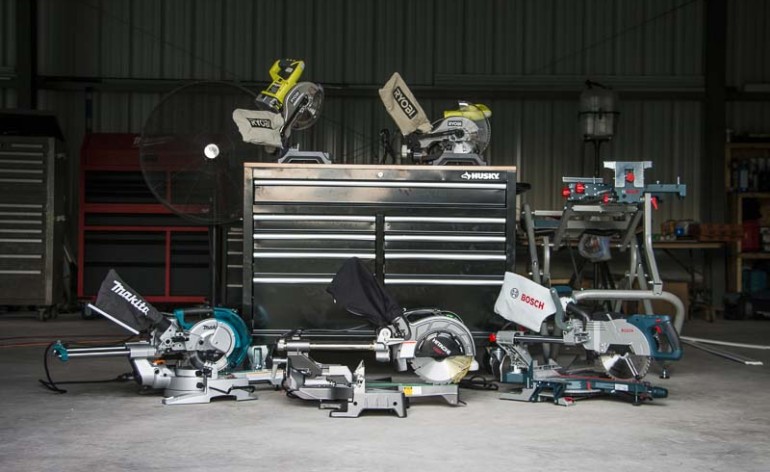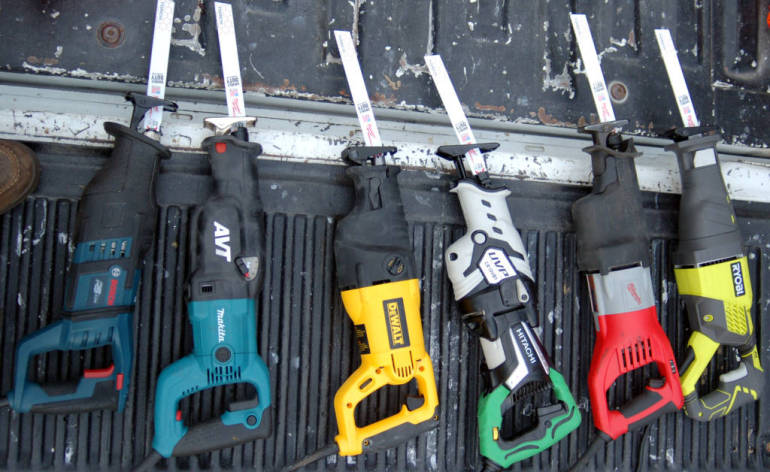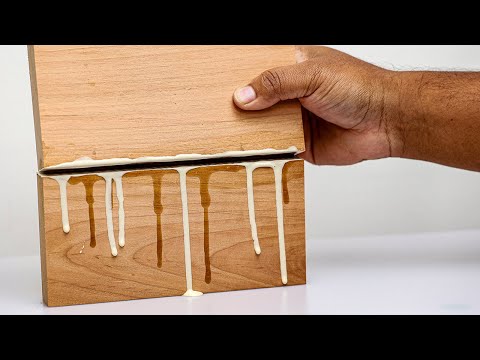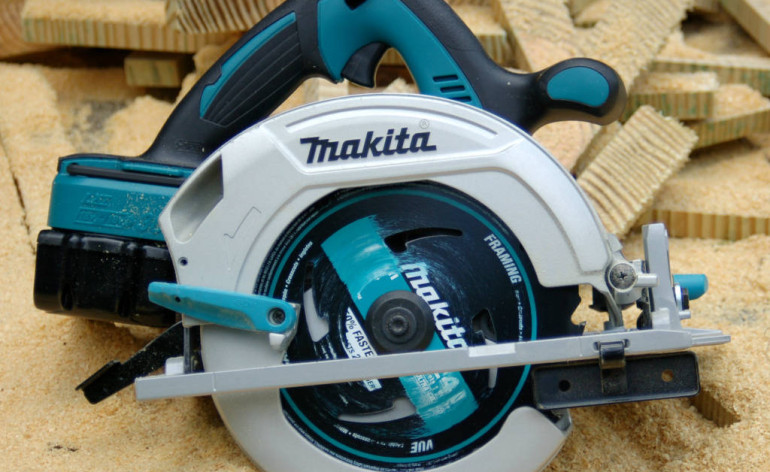Finger-saving safety features are finally available on the jobsite. Just in time for a labor shortage, right?
When we saw the SawStop 10-inch jobsite table saw with mobile base at JLC Live, we knew we wanted to get a closer look. We asked Kirk Funk, a remodeler in Silver Spring MD to review the saw right out of the box for us.
The saw was provided by SawStop, but SawStop had no editorial input whatsoever. Kirk opened the box, cut some wood, and recorded what he thought.
A Stand That Locks and Rolls
This saw brings safety and innovation that you'd expect from SawStop to a mobile platform.
The saw ships with the mobile cart already attached. The handles and the wheels are two items that have to be attached when you're unboxing. Very simple connection, there are through-bolts and lock washers on each of these.
It took no more than five minutes to assemble.
The table is very easy to fold up. A foot pedal unlocks it from the cart, then we're able to lower the whole unit. It locks into place, and we're ready to roll.
As you can see its set on its end, it is very stable, it's not going to fall over. And there's a vertical end, so we can place it by a wall if we need to stow it away.
When we're ready to use it again, press the same foot lever, lower the handles, and we're ready to go.
The Knife, the Throat, and the Guard
When we extend the rails, there is stowaway storage. There is literature on cutting conductive materials in bypass mode; also, changing the brake.
Inside is storage for another brake, storage for the blade guard, and the riving knife, which can be switched out.
There are also some Allen keys for making adjustments to the saw.
The table comes with a very substantial throat plate
I believe the throat plate was plunged in the factory, so it is pretty much a zero-clearance throat plate. It has a locking tab, so if you pop it and pull it you can see there are adjustment screws so that the throat plate is perfectly flat with the table.
Riving knife and blade guard swap out easily
With the throat plate removed, there is access to the riving knife and blade guard for changing. This is achieved by a very simple lever that clamps it in place—you lower it to lock it, or raise it to remove it.
In the storage compartment is the blade guard. It very simply slips back into the same slot. Tighten the lever and it's locked in place. Reinstall the throat plate, and store the riving knife.
Another neat function of this saw is the ability to modify the fence guard. You can actually remove the guard completely, raise up the anti-kickback mechanisms, and that way you can pass boards through without marring the surface.
The blade guard goes back just as easily as it comes apart. Lower the anti-kickback mechanisms, and slip the blade guard back on, and we're ready to cut.
The saw supports a large tabletop which is powder-coated cast aluminum
It measures just under 26 inches deep by 31-1/2 inches wide.
When the leaf is extended, it adds an additional material support of almost 43-1/2 inches, side to side on the table.
There is fence storage right underneath on the side of the table saw with a locking mechanism on the side
You can lock it in, if you need to transport it, and you'll know that the fence isn't going anywhere. Throw it in the back of your pickup, and feel secure that nothing is going to shift on you.
To release the fence, just press the easy-lock button on top.
The Fence
The SawStop features a really nice fence that is laminated on the sides. it is a very smooth surface. It easily locks on the table and slides smoothly. The button on the end is used to lock the fence in place with a very simple one-finger operation. The leaf extension is easy to operate, with one positive stop. The fence moves with the leaf.
There are two measurement scales on the saw: one to use with the rails retracted, and one to use with the rails extended.
With the rails extended, there is no table support beneath the fence's edge. But another cool feature is material support that slides out with a 180-degree turn of a knob on top of the fence.
The fence is easily removed and stowed on the side of the saw, and it locks into place.
Maybe the most important feature of this saw is its safety features
It does sport a large paddle switch to turn the saw on and off and spin up the blade. It has another switch which powers up the computer. If we flip the on/off switch, essentially what we'll see is a couple of blinking lights.
One at the top indicates power status and one at the bottom, which will flash red until the saw is ready to use. On the side of the saw is a chart which indicates all of the functions of these two lights.
Once showing the green status, the saw is ready to use. The paddle switch will start the saw and spin up the blade. The flashing green light indicates that the blade is still spinning.
Above the lights is a bypass function, which, when depressed, allows you to cut in bypass mode—for many reasons: for cutting conductive material or just checking the moisture content of the wood.
The indicators will light up and indicate whether it is conductive or non-conductive, meaning that it will either trip the blade brake—or not.
The Table, the Leaf, and the Fence
The blade is easy to adjust
This is a really cool feature: a one-turn blade lift
You can fully raise the blade with a single turn. You can also make fine adjustments by slowly adjusting the handle. It is spring-loaded, so you can actually set it very accurately and the handle will return.
There is also a miter control, which controls the tilt of the blade. it is a paddle switch behind the wheel. If you depress it, you can tilt the blade to the indicated angle. There is also a fine adjustment so you can tuner it in, like a micro-adjustment.
The blade won't cut you
The saw is shipped with a blade brake, which is a safety feature that allows the saw to stop instantly and retract below the table should we come in contact with the balde or if cutting conductive material without using the bypass.
There is also a dado brake that is a little bit larger and will catch a full stack of dado blades. It accepts 8-inch dado blades., up to 13/16inch wide.
The saw won't operate with the wrong brake installed. The blade and brake assembly are easily removed; the whole process takes under five minutes. Just make sure you have some extras on hand.











